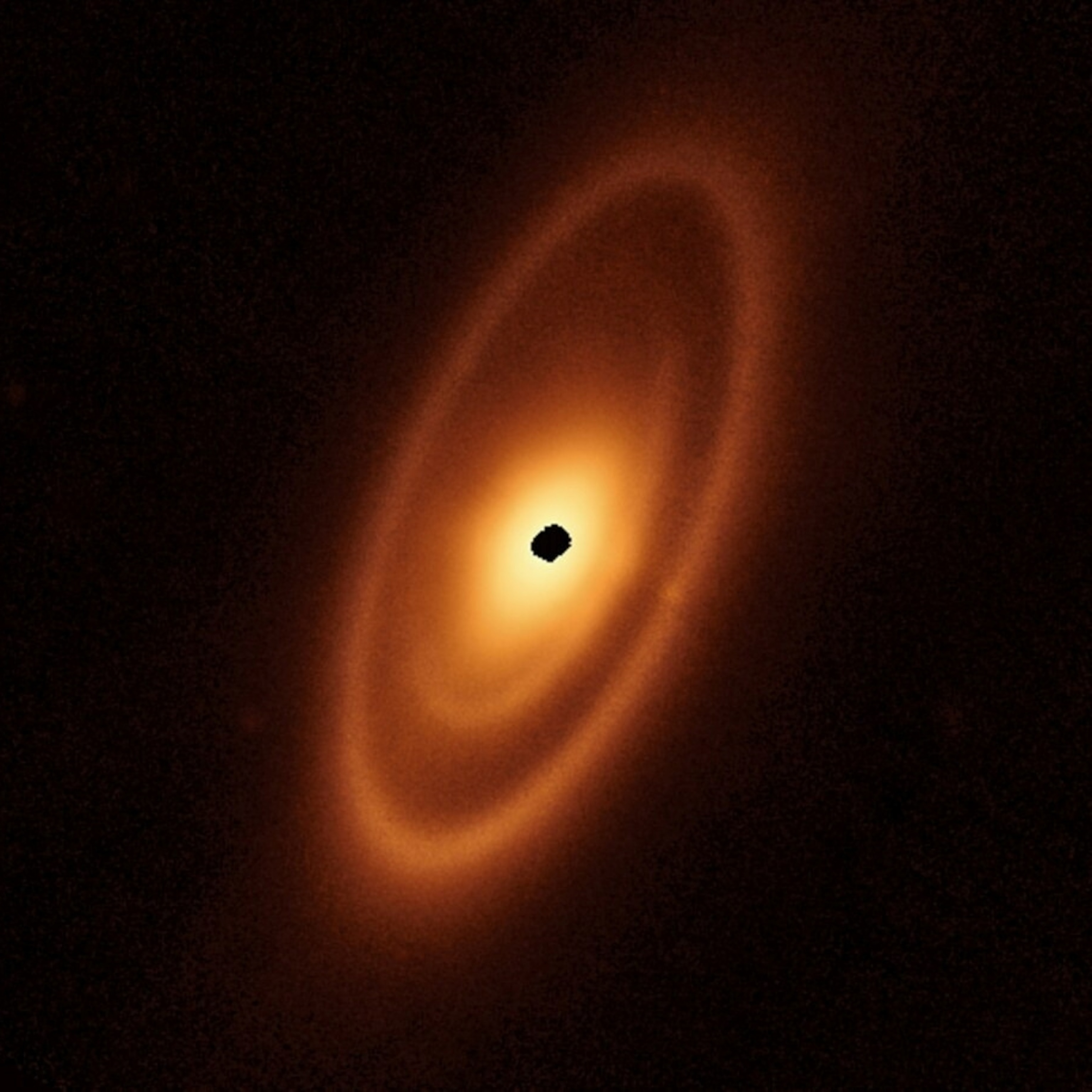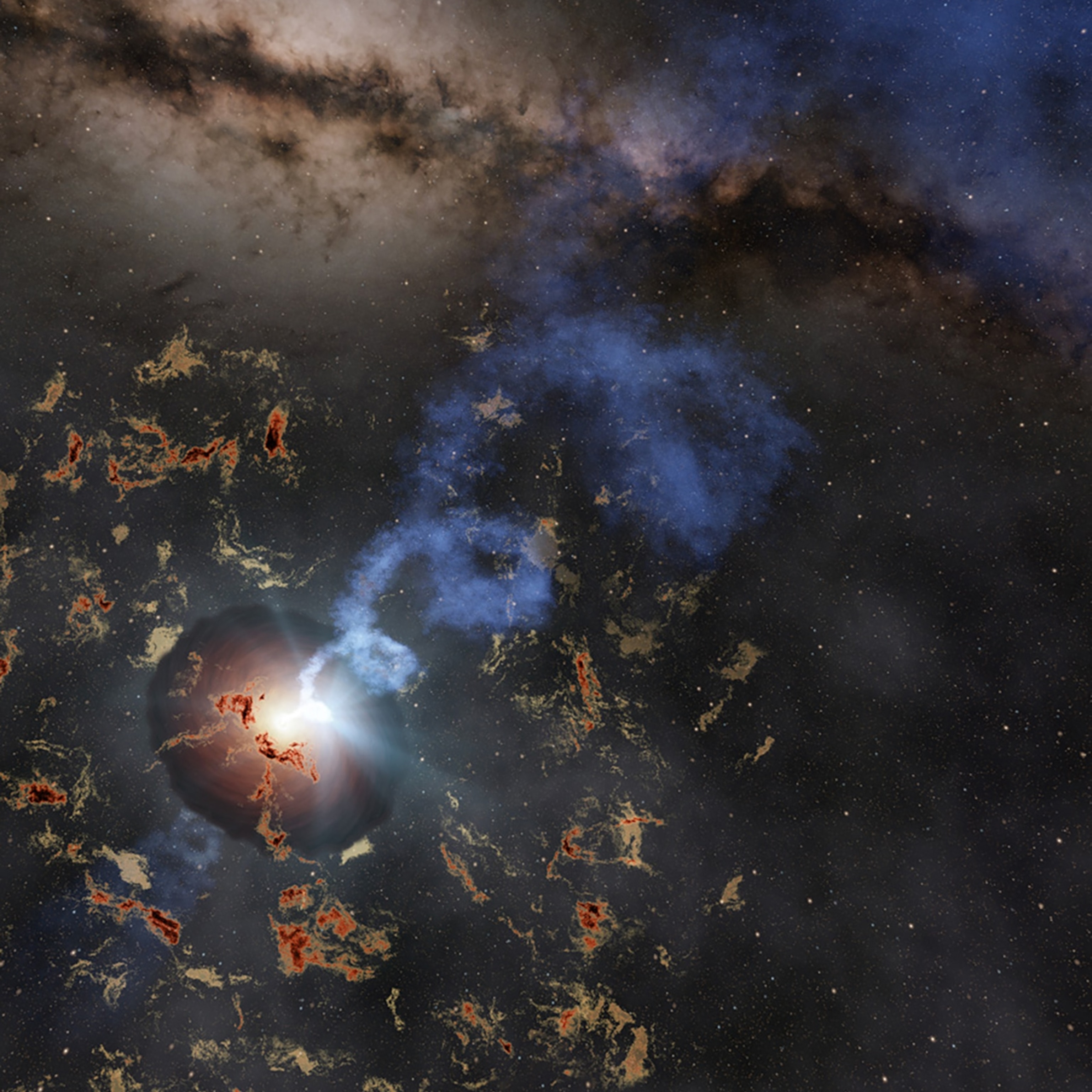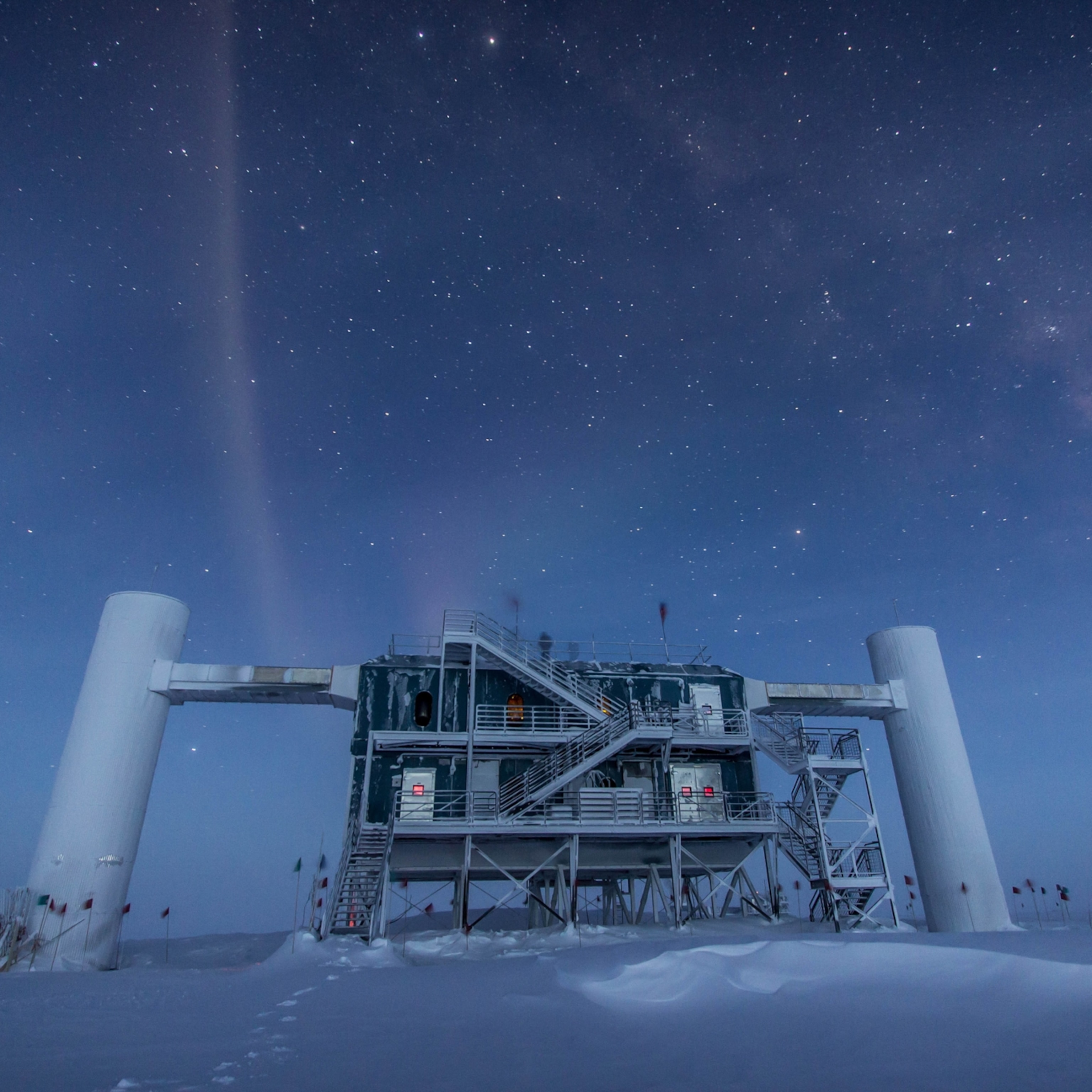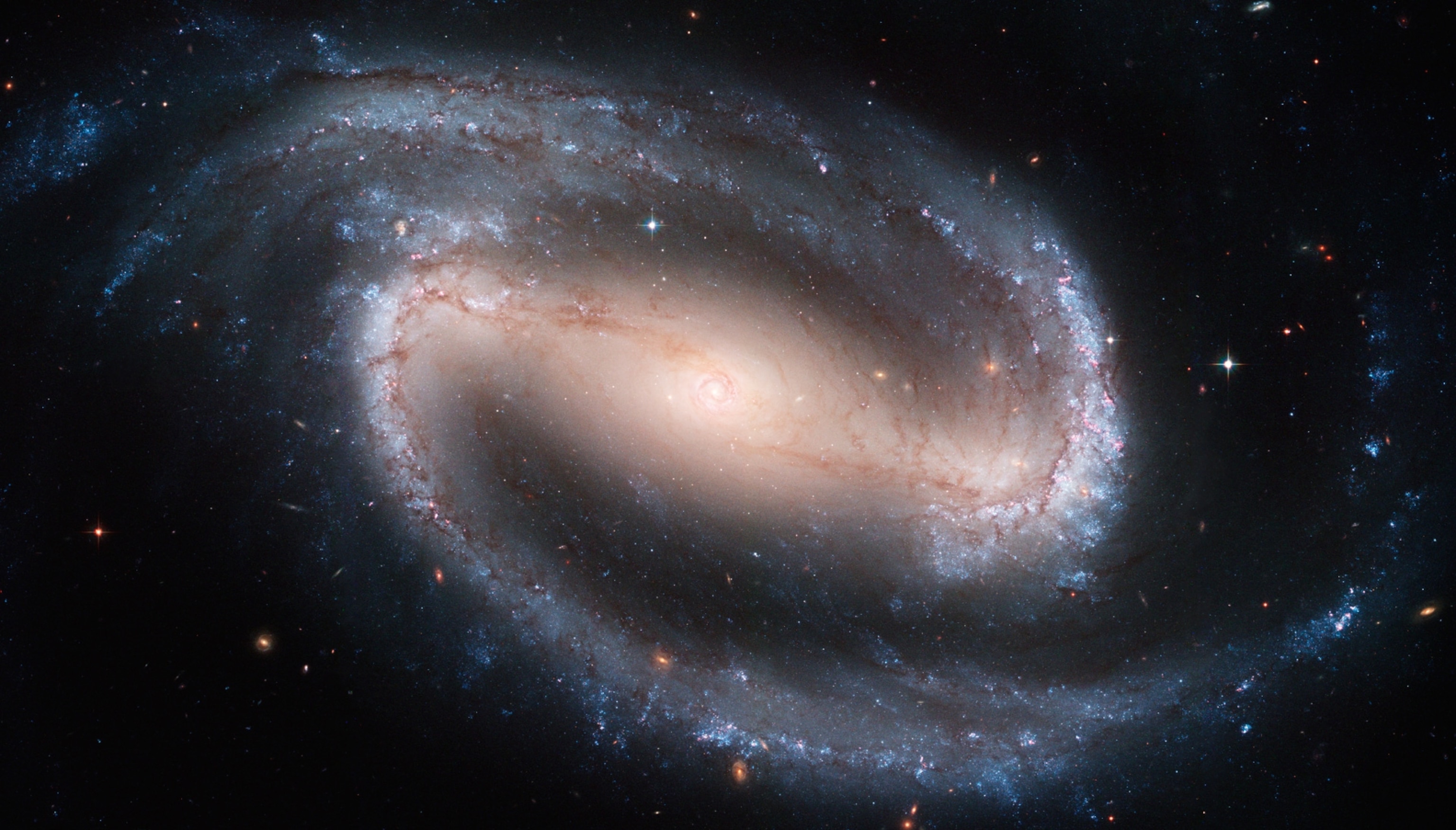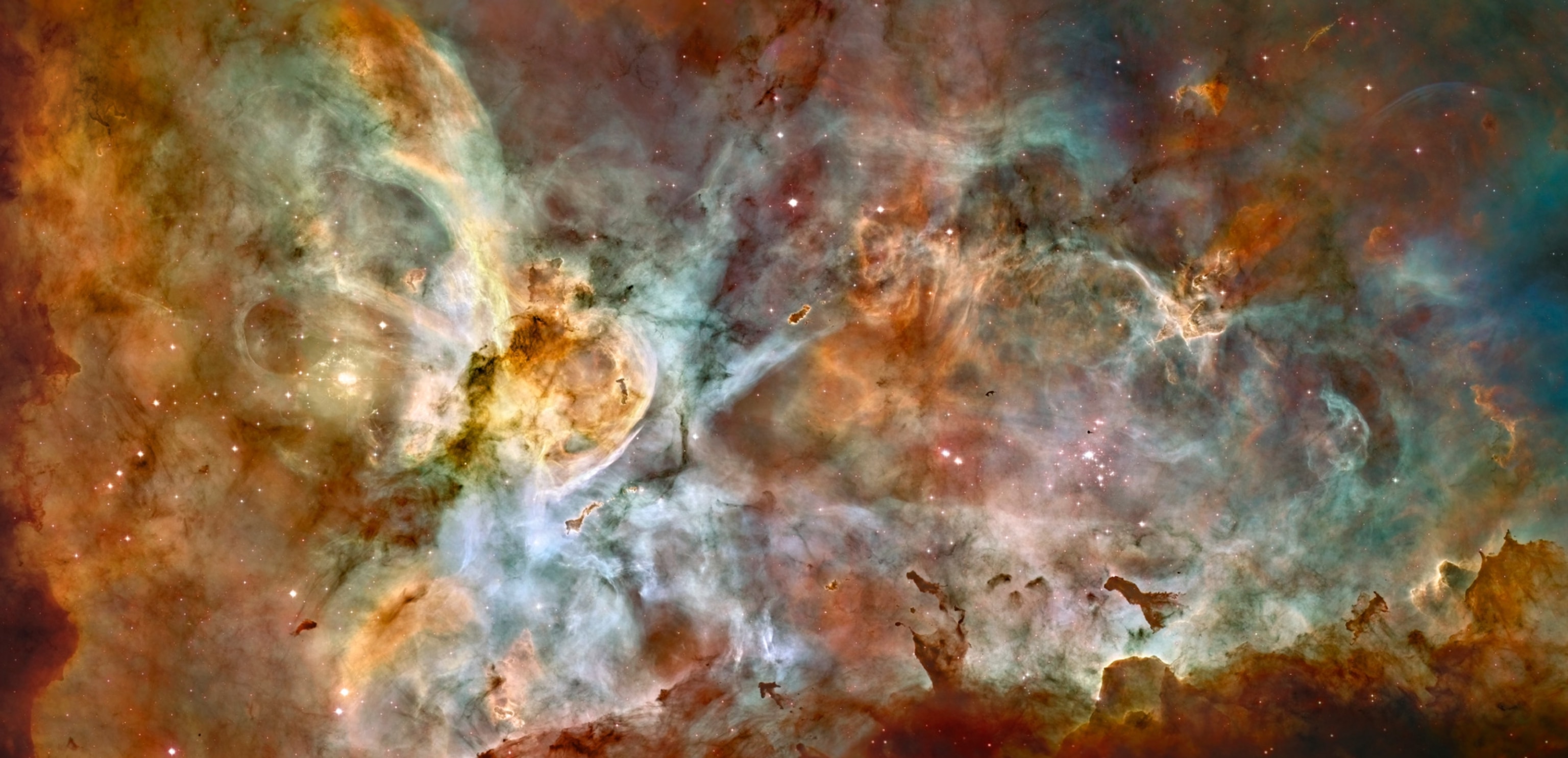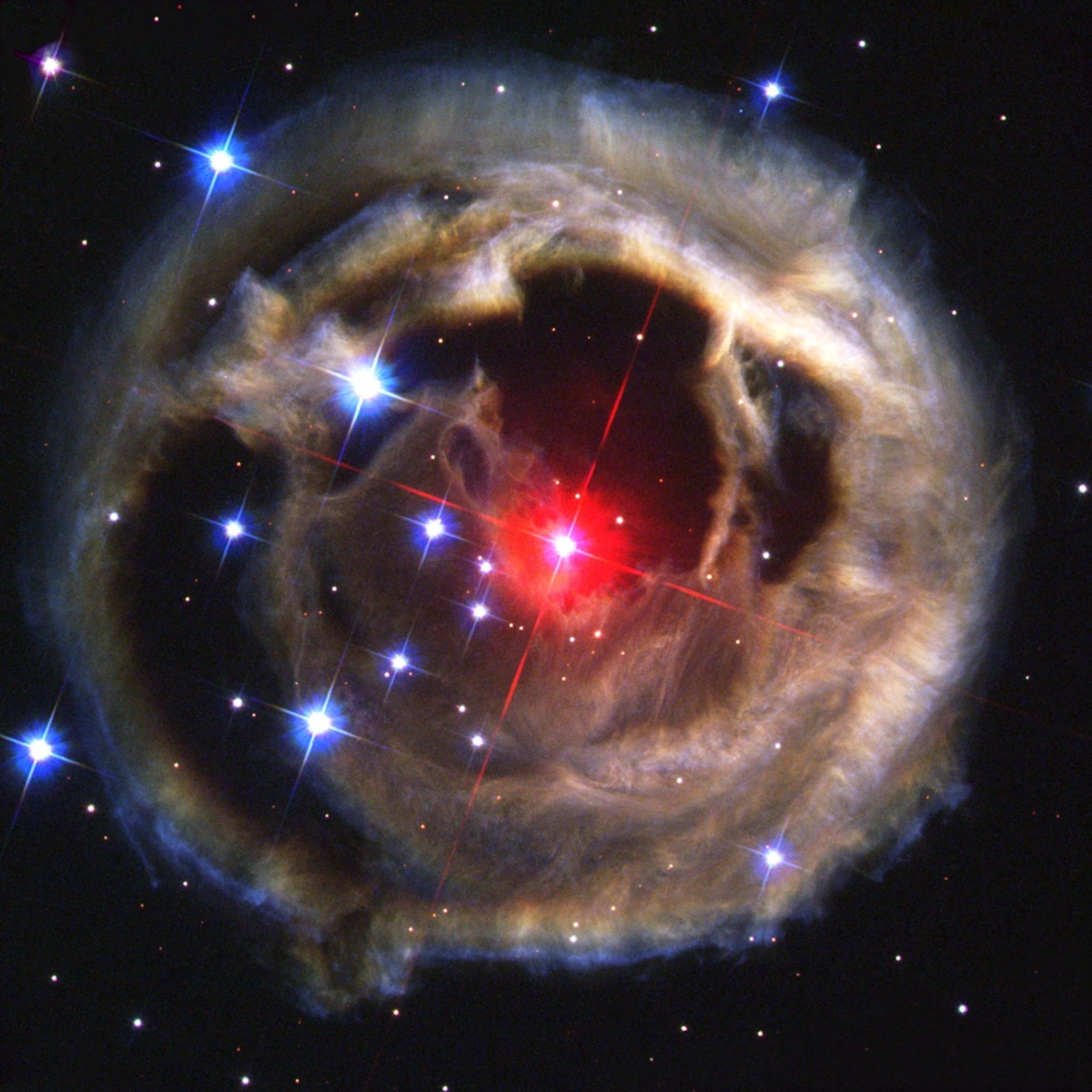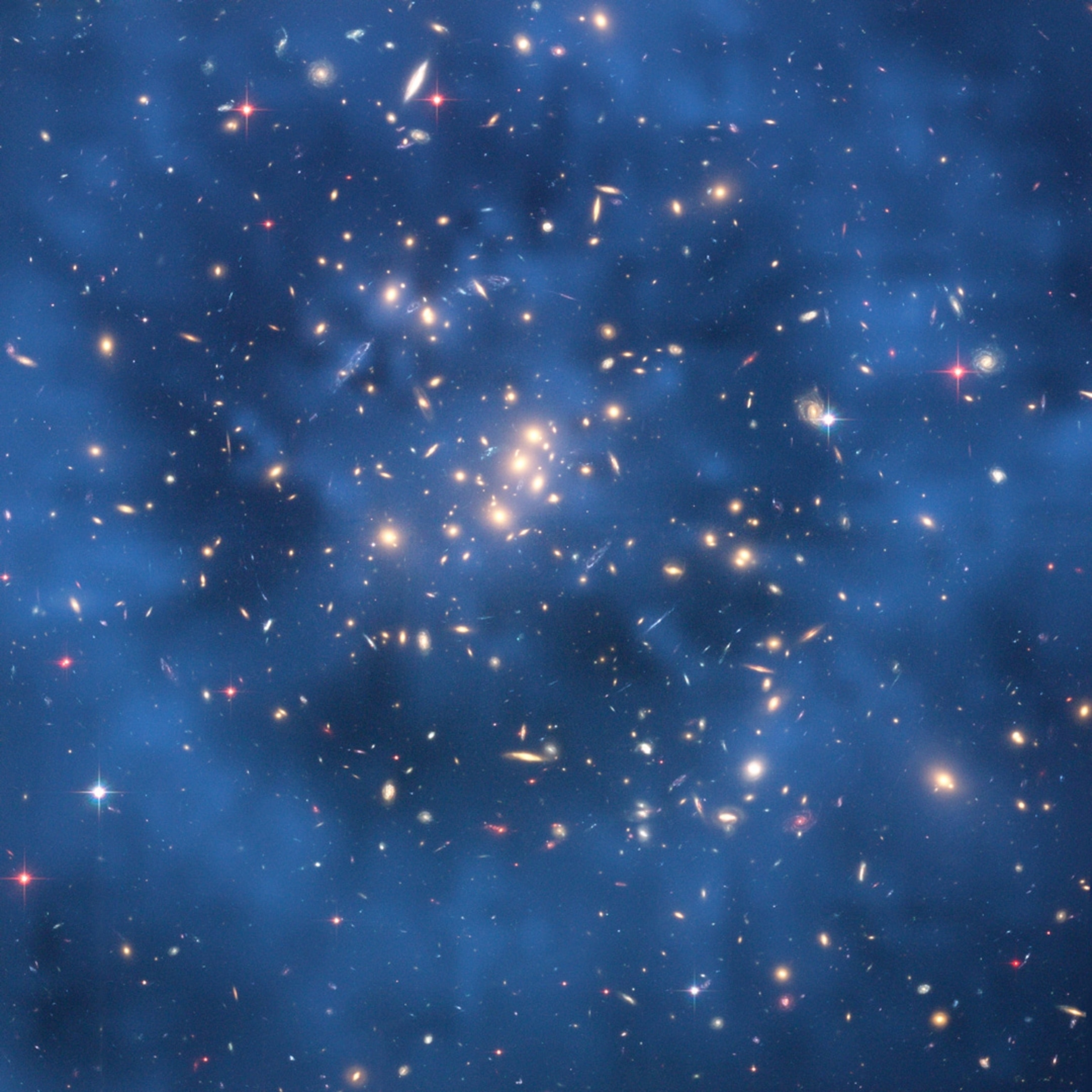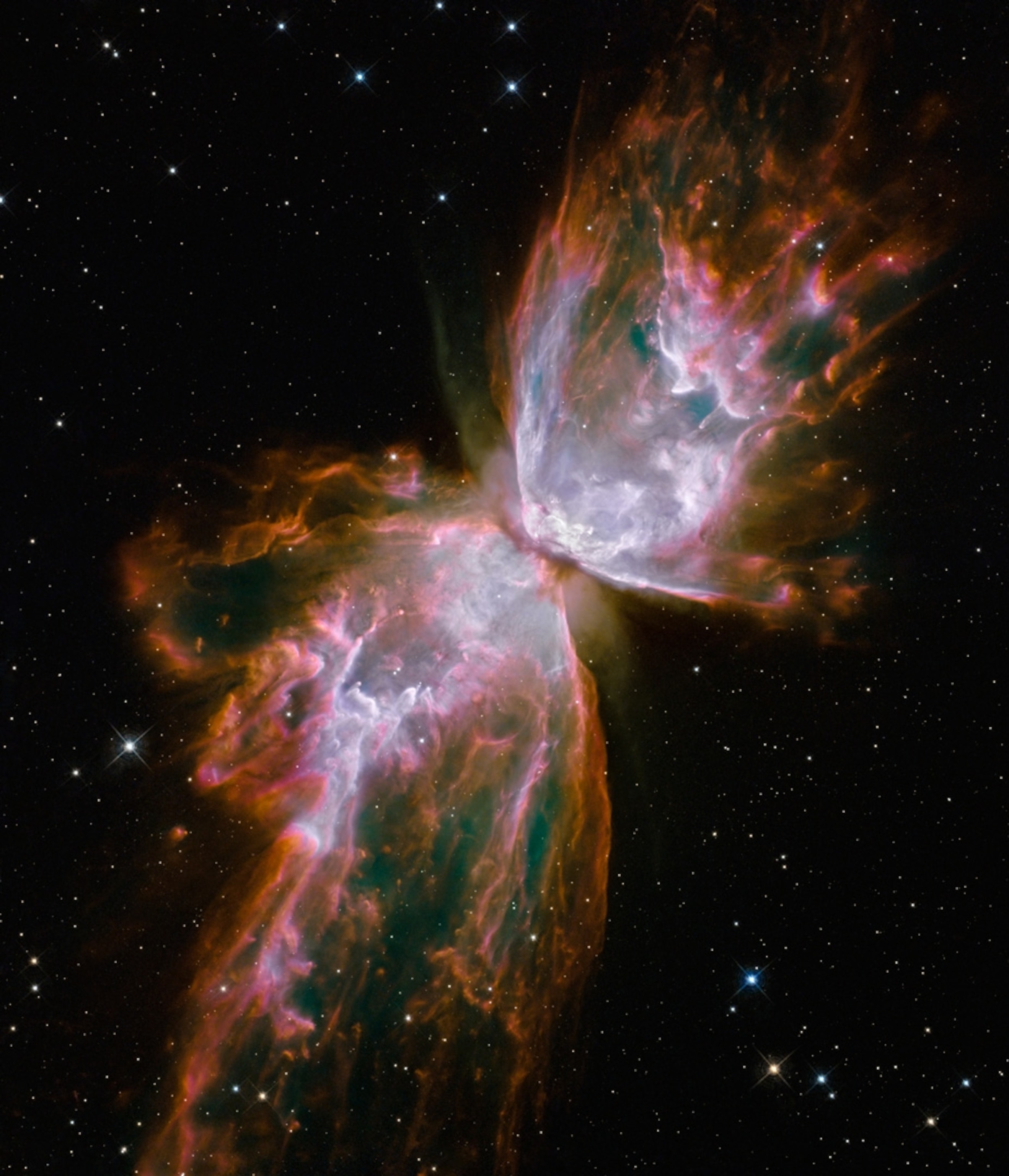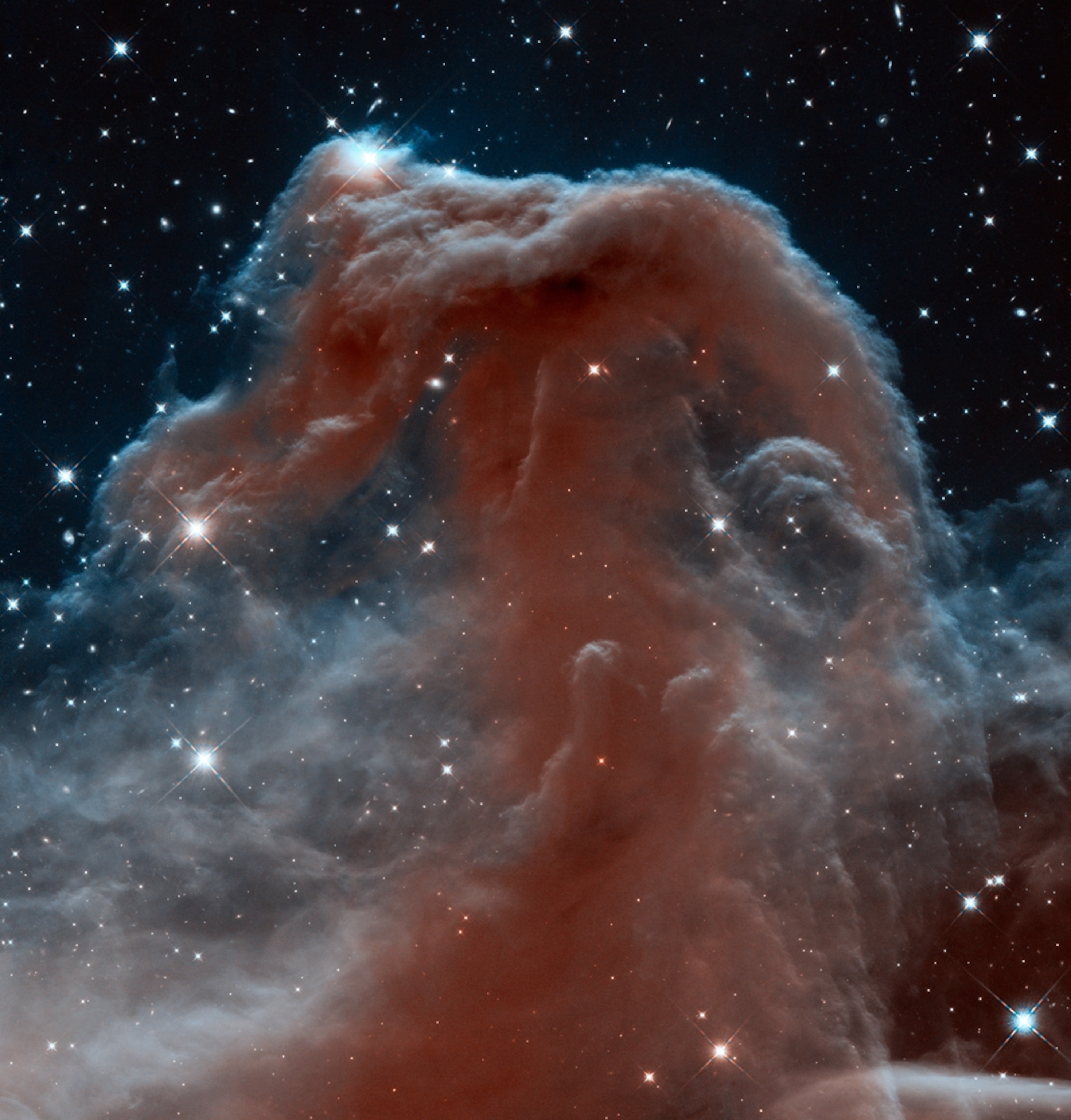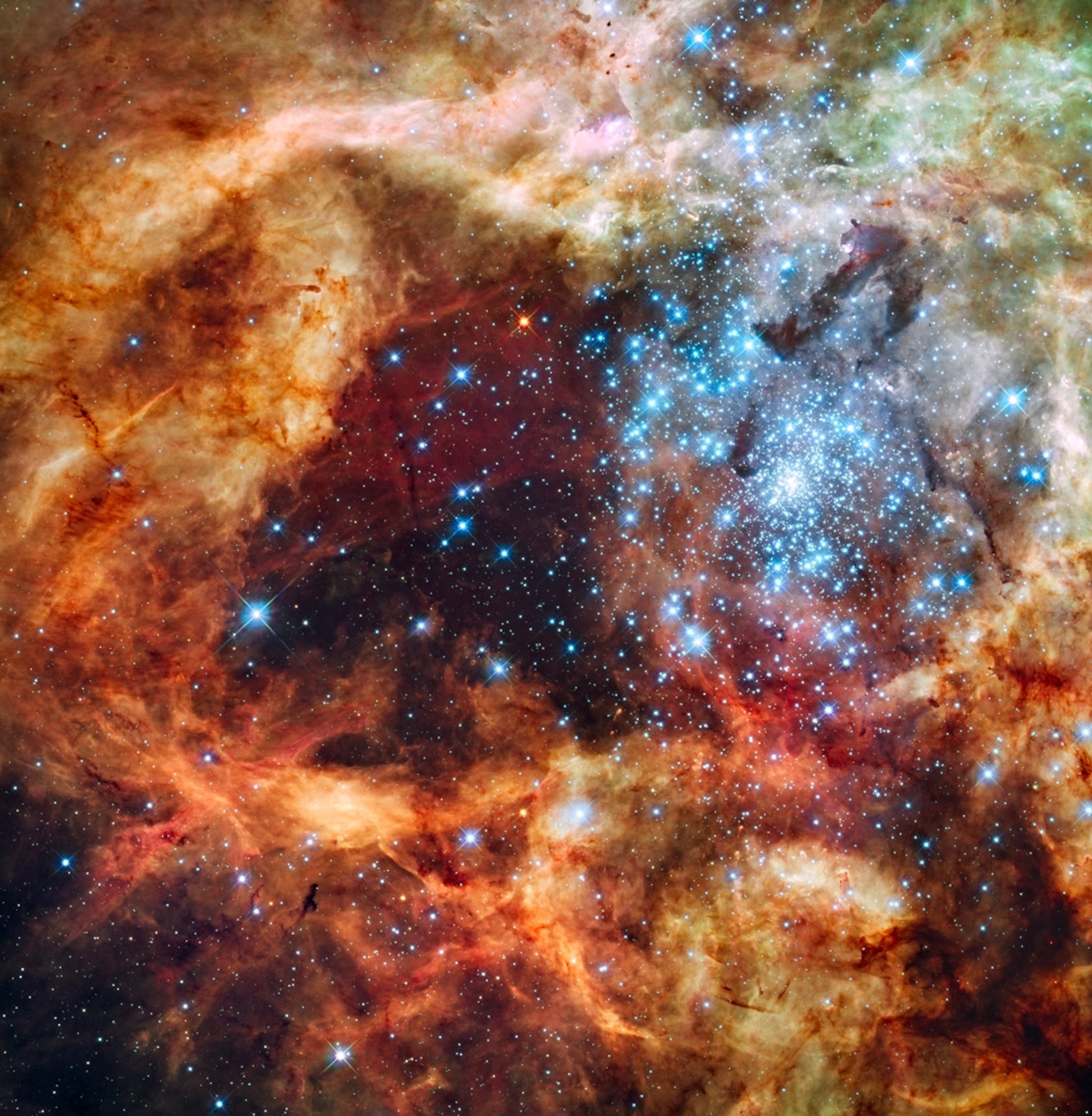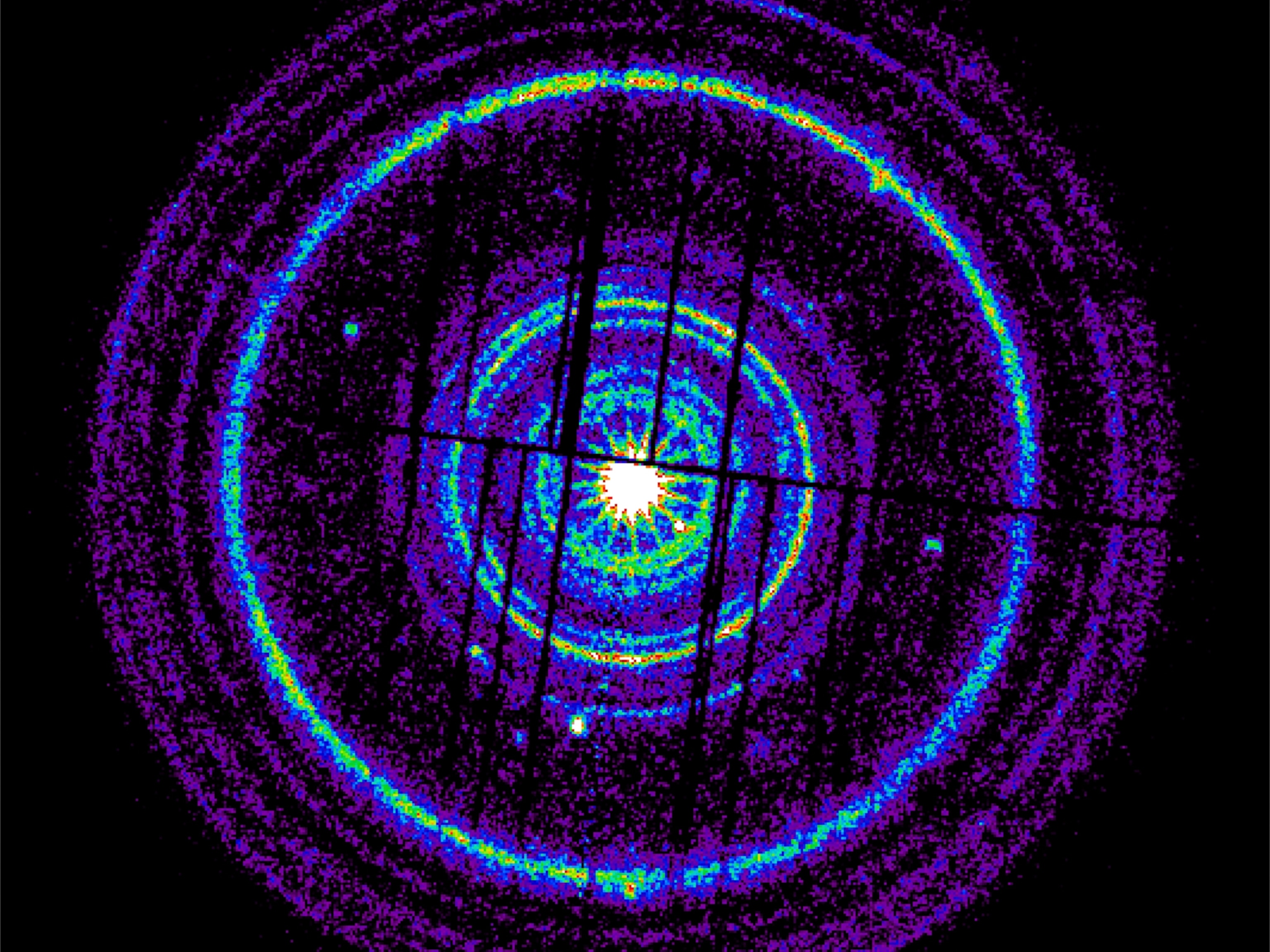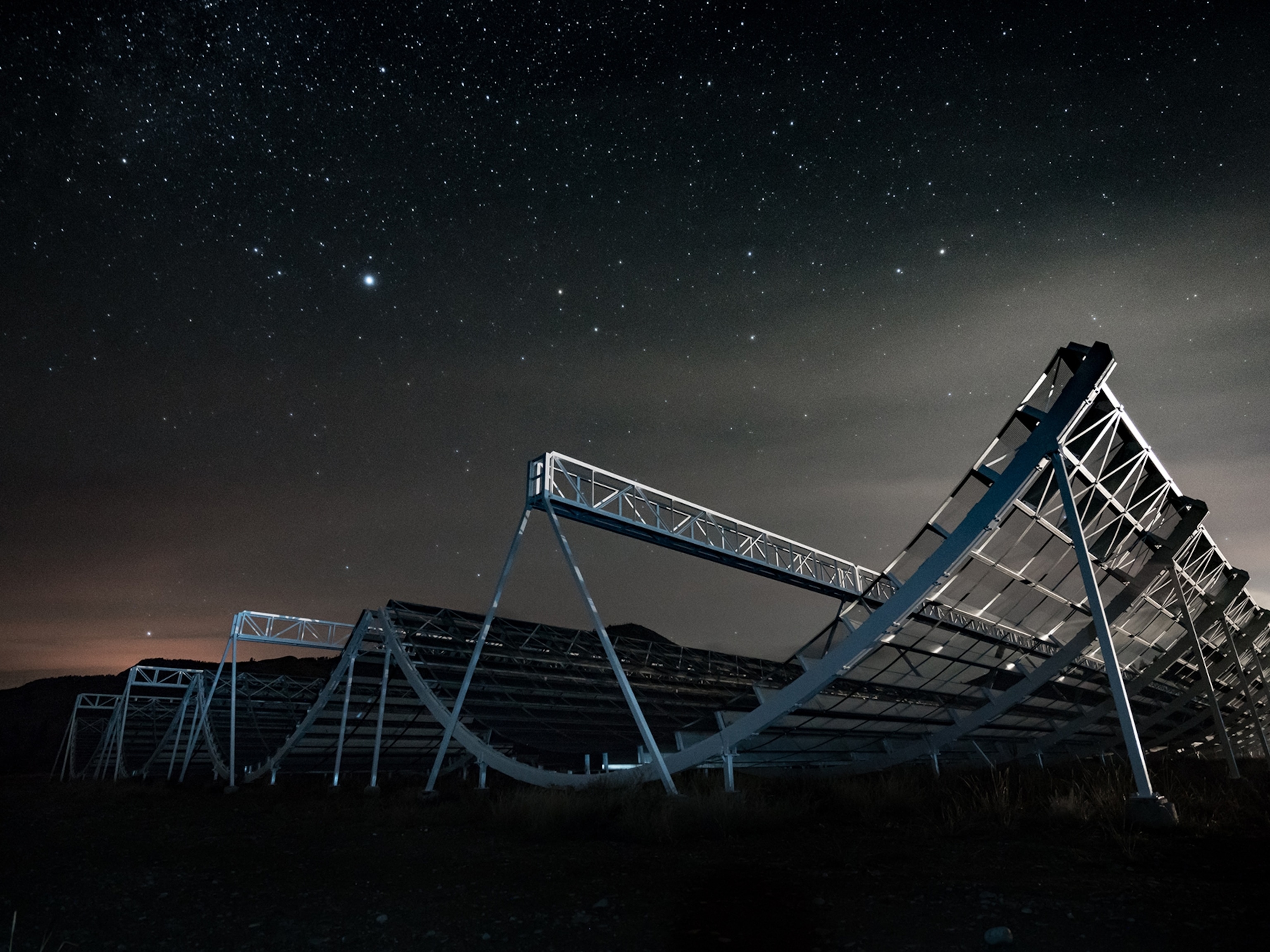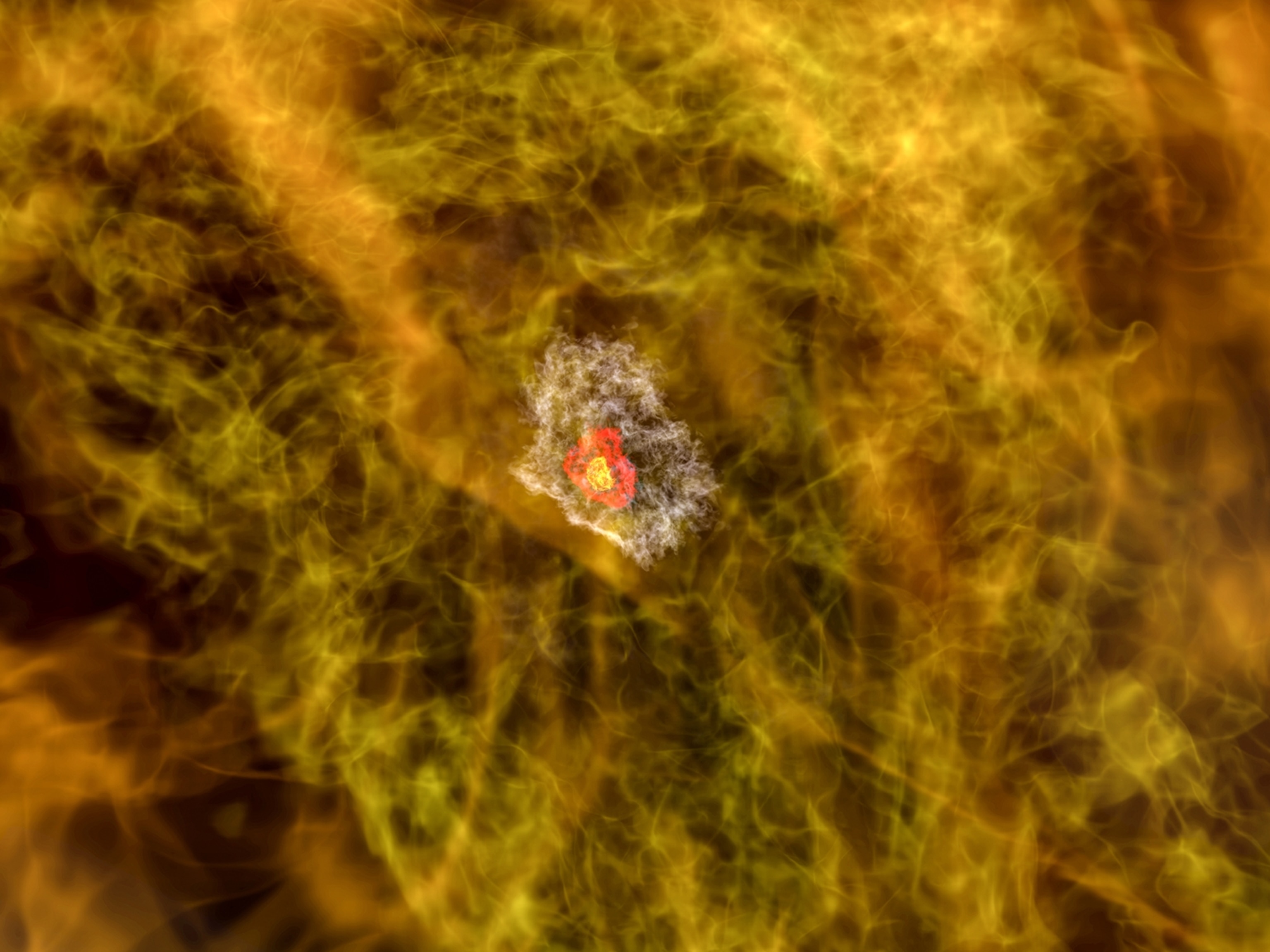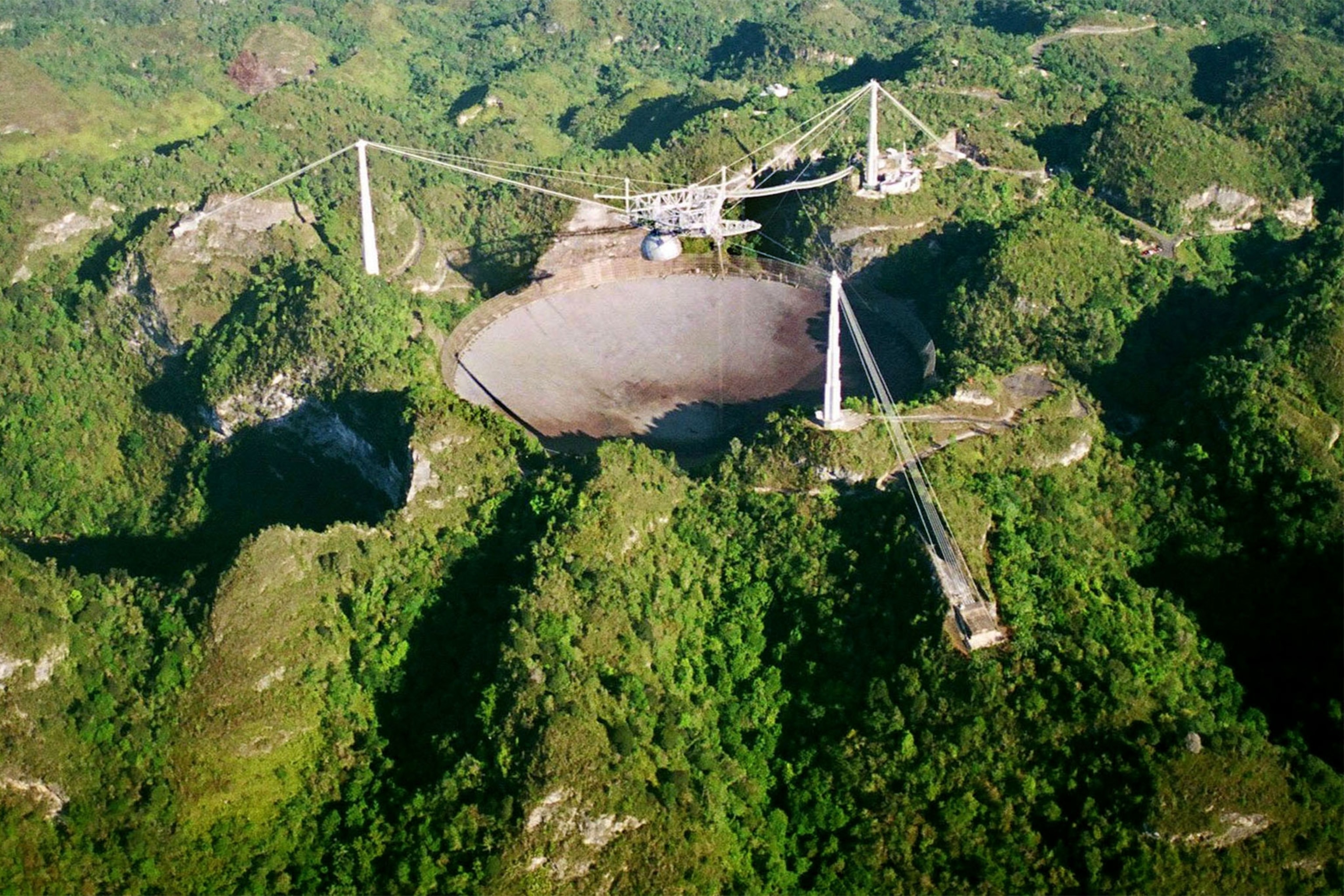
Mystery Radio Bursts From Space Just Got Even Weirder
Astronomers are transfixed by twisted waves seen coming from an odd object three billion light-years away.
Oxon Hill, Maryland — There’s a new twist in the tale of one of the strangest objects in the sky.
About three billion light-years away, that mysterious object continually hurls humongous blasts of radio waves into the cosmos. Now, scientists have spied in those waves the spiraling signature of an extremely strong magnetic field, suggesting that the cosmic oddity exists in an intense galactic environment containing a powerfully magnetic source.
The discovery adds to astronomers’ understanding of phenomena known as fast radio bursts, or FRBs, which are magnificently energetic flashes of radio waves that last for mere fractions of a second. It also allows researchers to paint a clearer picture of what conditions are like in an incredibly distant corner of the universe.
“We're directly probing the local environment of a source in a galaxy billions of light-years away,” says Emily Petroff of ASTRON, the Netherlands Institute for Radio Astronomy. “It's like the power to zoom in at a billion times magnification on an extreme object somewhere else in the universe.”
While the exact source of the magnetism is unclear, it’s possible this FRB is next to a supermassive black hole, like the churning bruiser near our galaxy’s center, or swaddled in the chaotic aftermath of a stellar explosion.
“In the coming weeks, we expect that very creative theorists are going to come up with explanations that we haven’t thought of yet,” says ASTRON’s Jason Hessels, a member of the team reporting the observations today in Nature and at the 231st meeting of the American Astronomical Society in Maryland.
Twist and Shout
The weird object, now called FRB 121102, first announced its presence to Earthly astronomers in 2012, when a tremendously energetic, perplexingly quick flash of radio waves slammed into the giant telescope at the Arecibo Observatory in Puerto Rico.
Though fast radio bursts had been baffling astronomers for years, this was the first one netted by Arecibo. Over the years, astronomers continued to study the spot on the sky, hoping to collect some clues about the cosmic enigma.
In 2015, Arecibo caught FRB 121102 in the act of repeating itself. Since then, the same object has slung more than 200 blasts of radio waves across the universe—and it’s still the only repeating fast radio burst among the roughly 30 known.
Last year, astronomers were finally able to pin the burst on a particular galaxy, a fuzzy little blob of a thing that’s furiously birthing stars three billion light-years away in the constellation Auriga.
And now, using data collected by Arecibo on Christmas in 2016, Hessels and his colleagues have been able to study the radio waves coming from the FRB at a higher frequency, and this time, they spied a twist in those blasts. Called Faraday rotation, the signal is produced when radio waves are twisted as they travel through magnetic fields. Except these waves are so strongly spun it means that FRB 121102 must be near a fantastically powerful magnetic field.
“This source is weird because it repeats, and now it’s weird because it has this huge rotation measure,” Hessels says.
Black Holes and Gas Tendrils
Though scientists now suspect that a neutron star—the dense corpse of a formerly much larger star—is involved in firing those radio blasts, they aren’t sure what, exactly, is powering the faraway magnetism. FRB 121102 is not the only such object with a magnetic fingerprint, but it’s 500 hundred times stronger than the handful of other twisted bursts, meaning that something unusual is happening its environment, even by the already bizarre FRB standards.
One way to explain the strength of that magnetic field is a nearby supermassive black hole, something with the mass of thousands of suns—perhaps even the one thought to be parked at the center of the burst’s home galaxy.
That’s because, in our own Milky Way, a pulsar near the galactic center also sends out waves with strong Faraday rotation, Hessels says. In fact, it’s the only object with a magnetic twist that even comes close to that observed at FRB 121102.
“A black hole being involved does make sense on some level, particularly since that's the only place we've seen magnetic fields this strong before,” says Petroff. But, she notes, “it's entirely possible that what is happening around FRB 121102 has no analog in our own galaxy.”
Another possibility is that the FRB source is very young and is tucked into a nebula formed by a recent supernova, the explosion that happens when a large star grows up and dies. These lethal eruptions are among the most violent events the cosmos can offer, and they leave behind some intriguing remnants, including neutron stars. If the FRB’s source is a magnetar (a type of neutron star), and it’s being naturally magnified by a magnetic bundle of gas and dust, that could also explain the observations.
“Dense tendrils of magnetized matter associated with turbulent gas surrounding a young supernova remnant would provide a comparably compelling explanation,” says Jean-Pierre MacQuart of Australia’s Curtin University.
He says that a supermassive black hole and roiling supernova remnant are both consistent with the data, at least for now: “I am sure that, in time, the astronomical community will conjure up no shortage of alternate scenarios to explain the environment of this FRB!”

